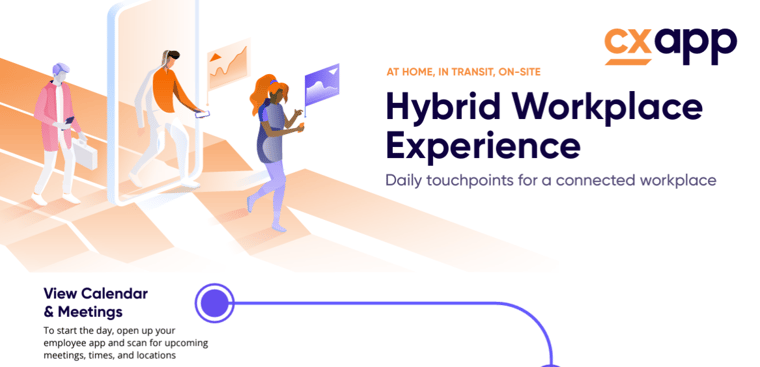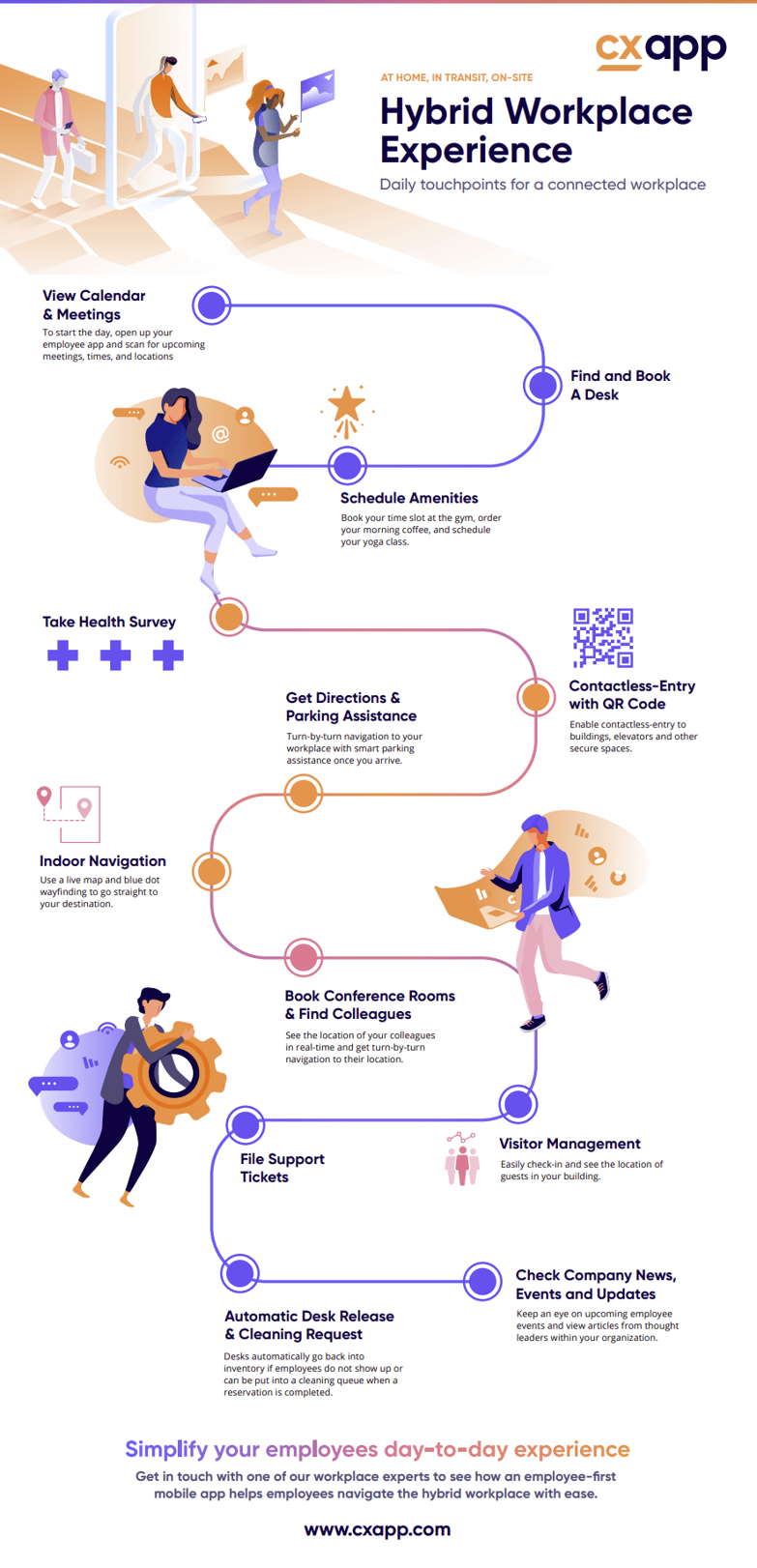
Companies are offering employees innovative and immersive experiences that enhance the employee experience. These experiences are mobile, smart, social, engaging, and meaningful to the employee.
In an age where the average job stint is 4 years, and even more volatile in the tech industry where companies are converting to little villages, attracting and retaining employees has become table stakes.
It's what goes into those efforts that meet the demand of the modern workforce that are really driving the industry. The connected employee wants to be able to dial up or turn down access to their company and job duties in digital minute but also be fully immersed at a moments notice.
With work from home opportunities and gig jobs on the rise, the touchpoints of the workplace need to span at-home, on-site and in transit moments to connect to the workforce. This includes touchpoints like reserving a desk, joining a meeting, taking a virtual tour, reading company news, ordering food from the cafe, finding available parking spaces, navigating to different buildings. The use cases are endless. But it's our job as workplace professionals to provide that level of connectedness for each step in the employee journey.

A flexible employee experience journey aids in work from home and work from anywhere scenarios. However, in times of uncertainty, companies need to ramp up strategic areas that impact overall work environments and workplace experience initiatives to address real problems/solutions employees may be facing while working remotely and potentially coming back into the office. All of the new employee journey touchpoints fall into these main areas of focus:
COMMUNICATIONS: With a distributed workforce, there is higher reliance on increased communications and transparency through sharing company information in real-time. Employee experience platforms that keep employees informed through newsfeeds, bulletins, notifications, events, networking, polls, surveys, proximity-alerts, and urgent safety notifications.
CONTACTLESS INTERACTIONS: This shift in workplace experience is putting a focus back on smart, connected spaces and leveraging IoT devices and sensors to create 'low-touch' or even ‘no-touch’ environments. Features that help facilities with automated contactless interactions include: mobile food ordering, digital badges and remote access, conference room relay, and booking rooms/desks via NFC, beacons, apps, and sensors.
ACTIVE MONITORING: Who, when, and how many people are walking through your doors and across your campus is hard to monitor, but nonetheless a huge point of focus for workplaces to begin to monitor and control. Features that aid in operational awareness include: contact tracing, employee density monitoring, visitor management, live maps/navigations, daily employee health questionnaire, as well as a cleaning and maintenance service queue.
No small task. These elements must be included for the new world of work.
An easily accessible hub should be the first and last thing used to build a positive work culture that is sustainable and stretches across at home, on-site, and in transit experiences that are part of the employee journey. This type of innovation provides employees, teams, and operations opportunities for engagement for the now, the tomorrow, and future scenarios that remain to be seen.